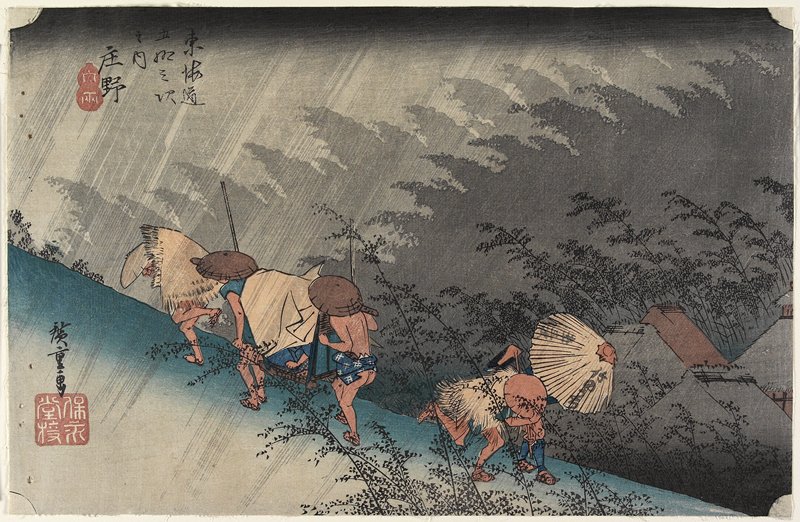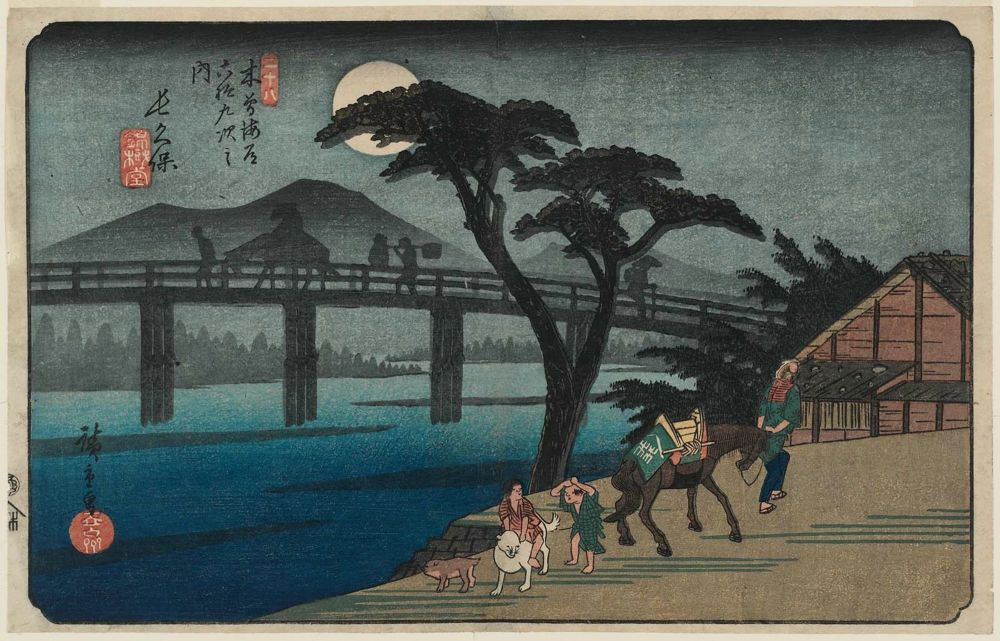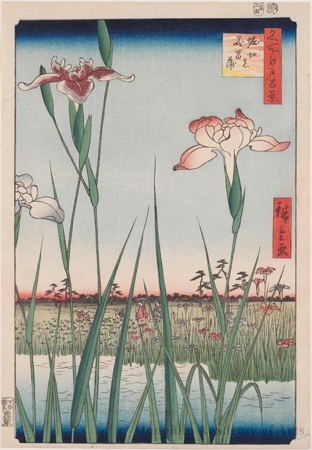My wife and I visited Japan for the first time, a year ago. We stayed with my brother-in-law David, his wife Mutsuko, and their three boys in Shizuoka, a coastal city 180km west of Tokyo, at the foot of Mount Fuji. While there we visited the ‘Shizuoka City Tokaido Hiroshige Museme of Art’ which is more of a description than a title. The Tokaido was the road that linked the cities of Kyoto and Edo, the two most important cities in Japan; one was home of the Emperor and his court, the latter was the new capital, home to the Shogun. During the lifetime of the artist Utagawa Hiroshige the journey along the Tokaido would take at least 2 weeks, along the way there were many stations, not like the ones we have today which are places to board transport, in those days most people walked and the stations were places where people could rest, have a meal, perhaps take stock before a particularly arduous river crossing or mountain climb. In the 1830s Utagawa depicted many of these in his famous work ’53 Stations of the Tokaido’, the one above is of the town Yui, which is where the Museme is located, after our visit, David drove us along narrow, steeply climbing roads to the viewpoint from where Hiroshige made his sketches: in a holiday full of highlights, it was one of my favorites!

You can still travel the Tokaido today, it is the route taken by the Bullet Train: which takes significantly less than 2 weeks to journey between Kyoto and Tokyo!
Adrian.May 5 2016
Bio
Hiro-shi-ge (1797-1858 ) was born in Edo to lower Samurai parents. They died when he was young, and because positions at that time were hereditary, Hiroshige inherited the job of fireman. This position came with a stipend for school where he studied art.
It was unusual for someone from a ‘higher class’ to go into lowly arts. Hiroshige lived towards the end of the times of the Samurai, they were poorly paid due to an out of date system where their stipend was paid in rice and set at a level from when rice was worth as much as gold (unfortunately for the Samuri this did not remain so). It was considered undignified for a Samuri to earn money, but it is believed that Hiroshige turned to art to supplement his income.
At first Hiroshige wanted to produce prints of the famous Kabuki actors, however the teacher he had wanted to study under was no longer accepting students, he recommended another tutor at the Utagawa school who specialised in landscapes. Hiroshige was a good student, who later along with Hokusai became one of the two most revered landscape print designers.
The Major Series
Hiroshige’s designs were wildly popular during his lifetime. We know this because he created so many lengthy, series of prints. These were produced as commercial items, so as there are so many series by him, and the series tend towards containing high numbers of prints- 53 Stations of the Tokaido, 100 Famous Views of Edo (which was so popular that the series continued onto 119 views!
Fifty-Three Stations of The Tokaido

Utagawa HIROSHIGE: Morning Mist at Mishima. 1833

Utagawa HIROSHIGE: Night Snow at Kanbara. 1833
While I don’t find the people in Hiroshige’s prints as captivating as Hokusai’s, I do love how he depicts weather.
Wind

Utagawa HIROSHIGE: Yokkaichi. 1833
Rain

Utagawa HIROSHIGE: Driving Rain, Shono. 1833
Sixty- Nine Stations of The Kiso Road

Utagawa HIROSHIGE: Nagakubo Station. 1934
In addition to his wonderful portrayals of weather, Hiroshige mastered depicting the moon and how things appear at moonlight.
One Hundred Famous Views of Edo

Utagawa HIROSHIGE: Night View of Saruwaka-machi. 1856
One Hundred Famous Views of Edo, was the last significant series Hiroshige designed.

Utagawa HIROSHIGE: Horikiri Iris Garden. 1857